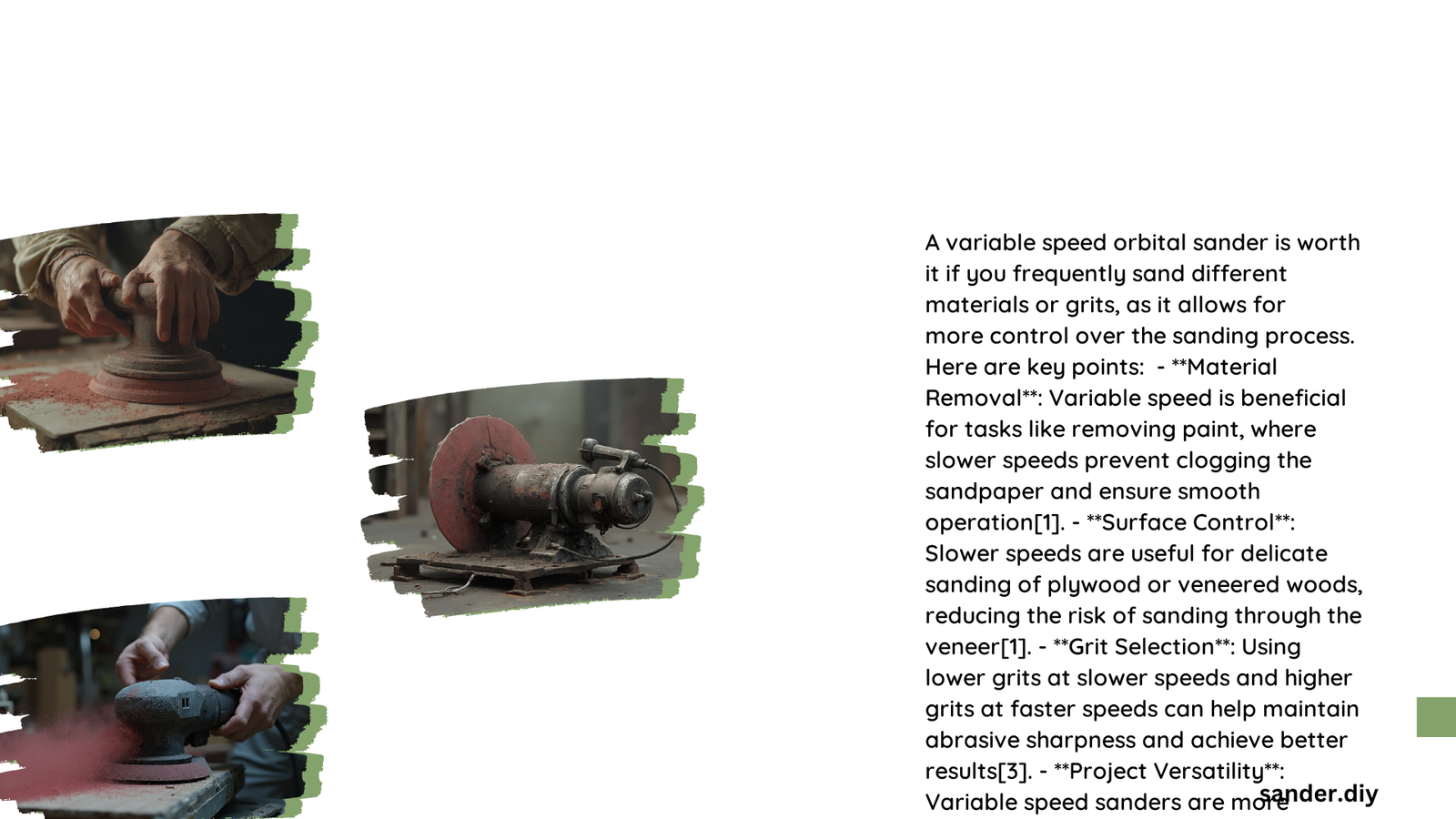Variable speed orbital sanders offer adjustable speed settings, typically ranging from 8,000 to 12,000 oscillations per minute (OPM). This feature allows users to adapt the sander’s performance to different materials and tasks, from delicate finishing to aggressive material removal. While more expensive than single-speed models, variable speed sanders provide greater versatility and control, potentially reducing material waste and improving finish quality across various projects.
What Are the Key Benefits of Variable Speed Orbital Sanders?
Variable speed orbital sanders offer several advantages over their fixed-speed counterparts:
- Versatility across different materials and tasks
- Better control over sanding aggressiveness
- Improved finish quality on various surfaces
- Potential reduction in material waste
- Adaptability to different project requirements
How Does the Cost-Effectiveness of Variable Speed Sanders Compare to Single Speed Models?

When considering the cost-effectiveness of variable speed orbital sanders, several factors come into play:
Initial Purchase Price
- Variable speed models are generally more expensive
- The price difference reflects the added functionality and versatility
Maintenance Costs
- Similar maintenance requirements for both types
- No significant difference in long-term maintenance expenses
Potential Savings
- Reduced material waste due to better control
- Extended sandpaper life in certain applications (e.g., paint removal)
While the initial investment is higher, the potential for material savings and improved versatility may offset the cost difference for frequent users or professionals.
What Are the Optimal Scenarios for Using Variable Speed Orbital Sanders?
Variable speed sanders excel in various scenarios, each benefiting from specific speed settings:
| Task | Recommended Speed | Reason |
|---|---|---|
| Fine Finishing | Low to Medium (4-6 on a 1-6 scale) | Prevents sanding through delicate finishes |
| Paint Removal | Low (2-3 on a 1-6 scale) | Avoids melting paint and clogging sandpaper |
| Rough Surface Smoothing | High (5-6 on a 1-6 scale) | Allows for aggressive material removal |
| Plywood/Veneer Sanding | Low | Prevents damage to thin veneers |
| General Wood Sanding | Medium to High | Efficient material removal with finer grits |
How Does Speed Affect Finish Quality on Different Materials?
The impact of sanding speed on finish quality varies depending on the material:
Wood
- Lower speeds: Ideal for delicate surfaces like plywood or veneered woods
- Higher speeds: Suitable for most wood types, especially with finer grits (180+)
Metal
- Lower speeds: Recommended to prevent overheating the surface
- Variable speed allows for adaptation to different metal types and finishes
Paint
- Lower speeds: Help remove paint without melting, reducing sandpaper clogging
- Improved efficiency and finish quality in paint removal tasks
What Are the Key Considerations When Choosing Between Variable and Fixed Speed Sanders?
When deciding between variable and fixed speed orbital sanders, consider:
- Project variety: Variable speed is beneficial for diverse tasks
- Material types: Different materials benefit from speed adjustments
- Skill level: Variable speed offers more control for beginners and professionals alike
- Budget: Weigh the higher cost against potential long-term benefits
- Frequency of use: More frequent use may justify the investment in variable speed
How Can Variable Speed Improve Sanding Efficiency and Results?
Variable speed functionality can enhance sanding efficiency and results through:
- Adaptability to different materials and surface conditions
- Reduced risk of damaging delicate surfaces
- Improved control over material removal rate
- Better finish quality across various applications
- Extended sandpaper life in certain scenarios
By matching the speed to the task and material, users can achieve optimal results while potentially saving time and resources.
What Are the Limitations of Variable Speed Orbital Sanders?
While variable speed orbital sanders offer numerous benefits, they also have some limitations:
- Higher initial cost compared to fixed speed models
- Potential for user error in speed selection
- More complex mechanism, potentially leading to more points of failure
- Overkill for users who primarily work with a single material or task type
Understanding these limitations can help users make an informed decision based on their specific needs and budget.
In conclusion, variable speed orbital sanders offer significant advantages in versatility, control, and finish quality across various materials and tasks. While the initial investment is higher, the potential for improved results and material savings can make them a worthwhile choice for many users, especially those working on diverse projects or with different materials. However, the decision ultimately depends on individual needs, project requirements, and budget considerations.
References:
1. The Ultimate Guide To Orbital Sanders – A Butterfly House
2. Random Orbit Sander | Speeds | Woodworker’s Journal | How To
3. Choosing and Using Random Orbit Sanders – This Old House
